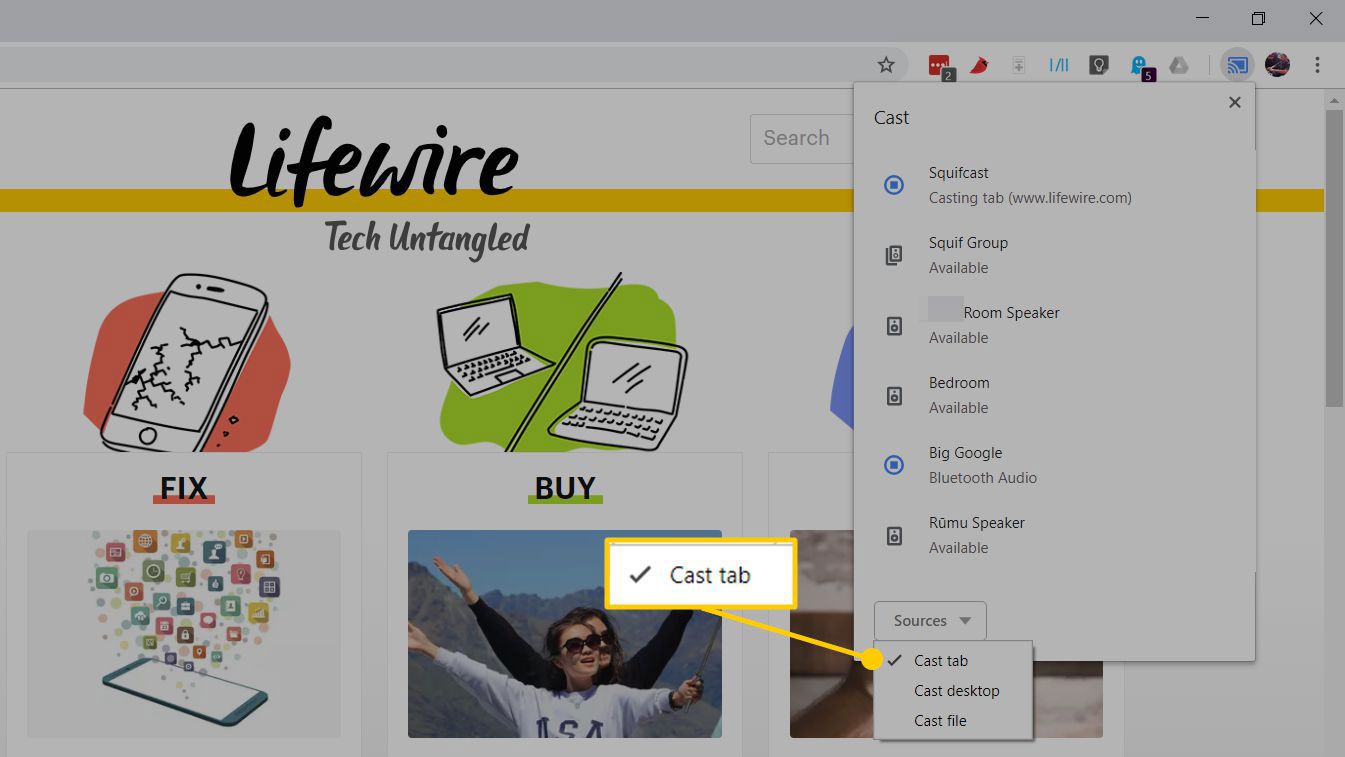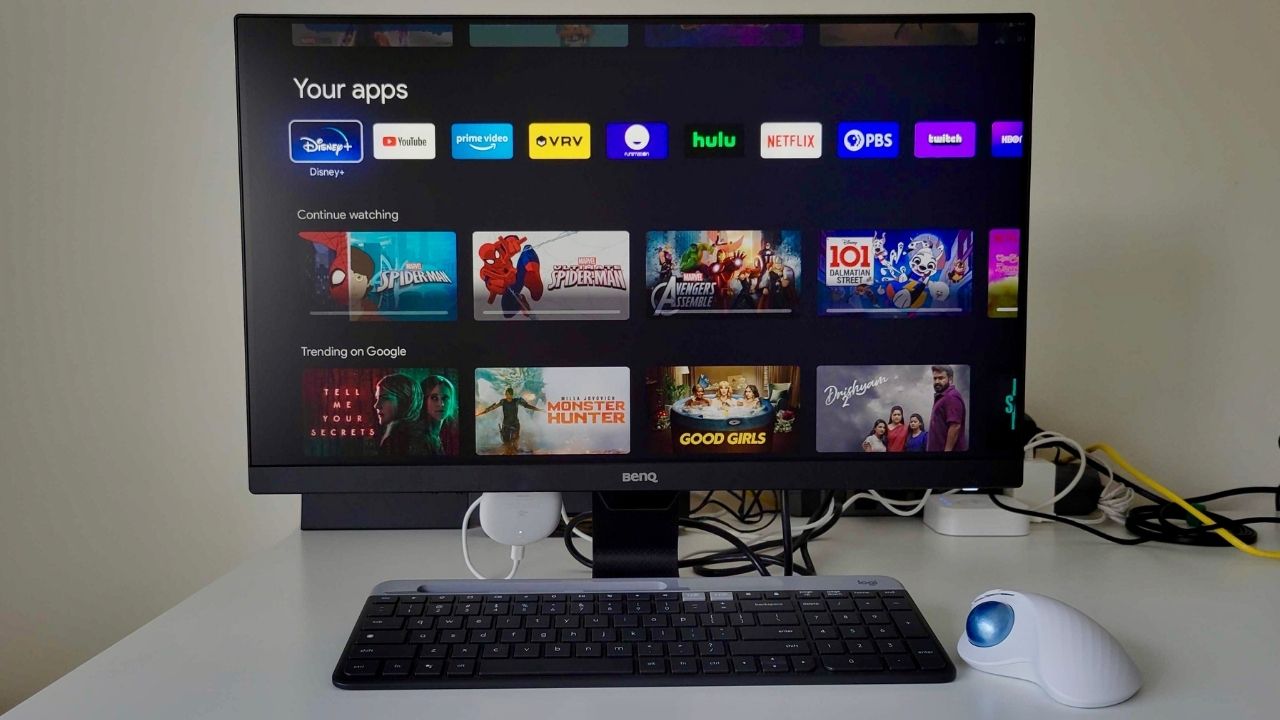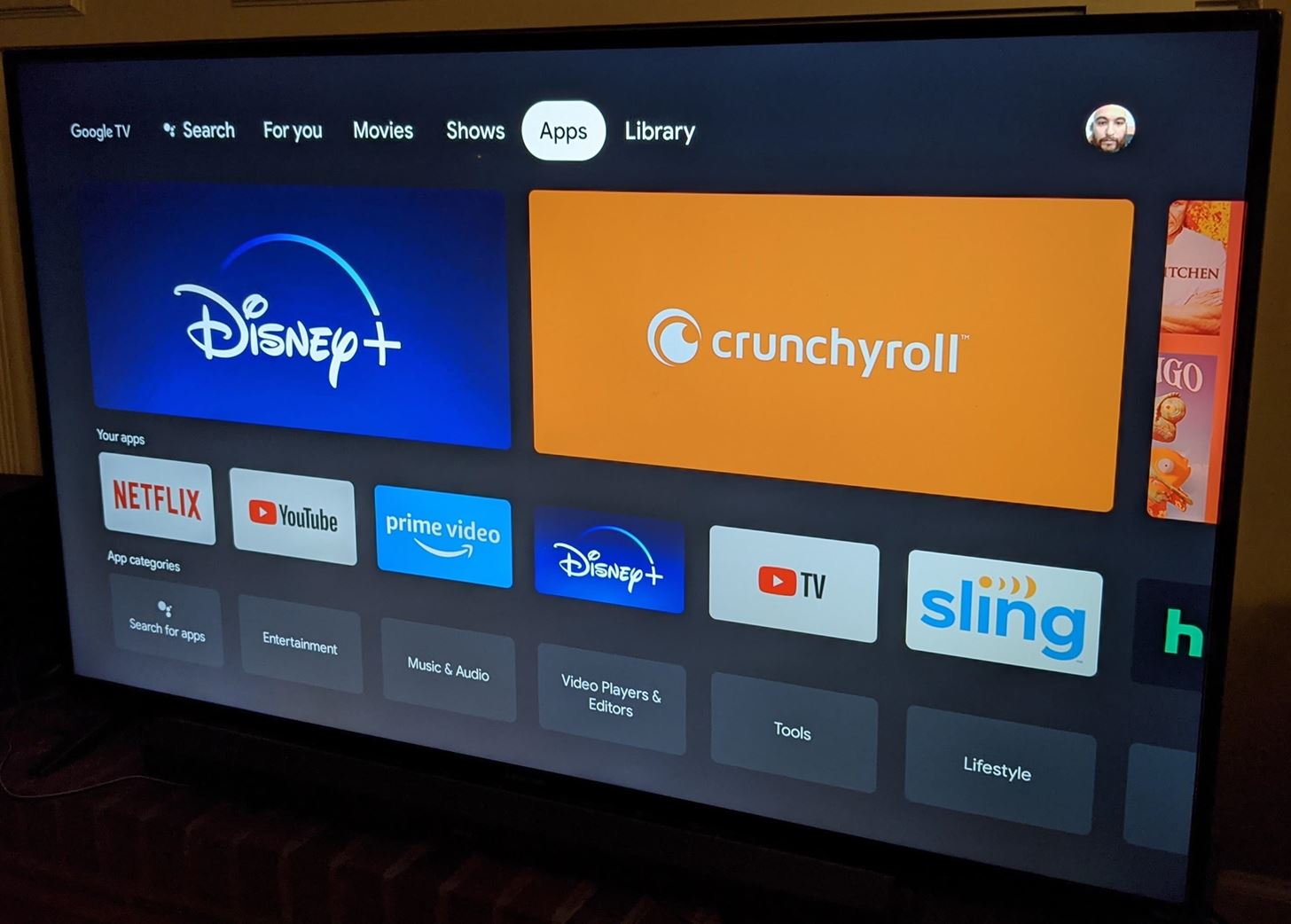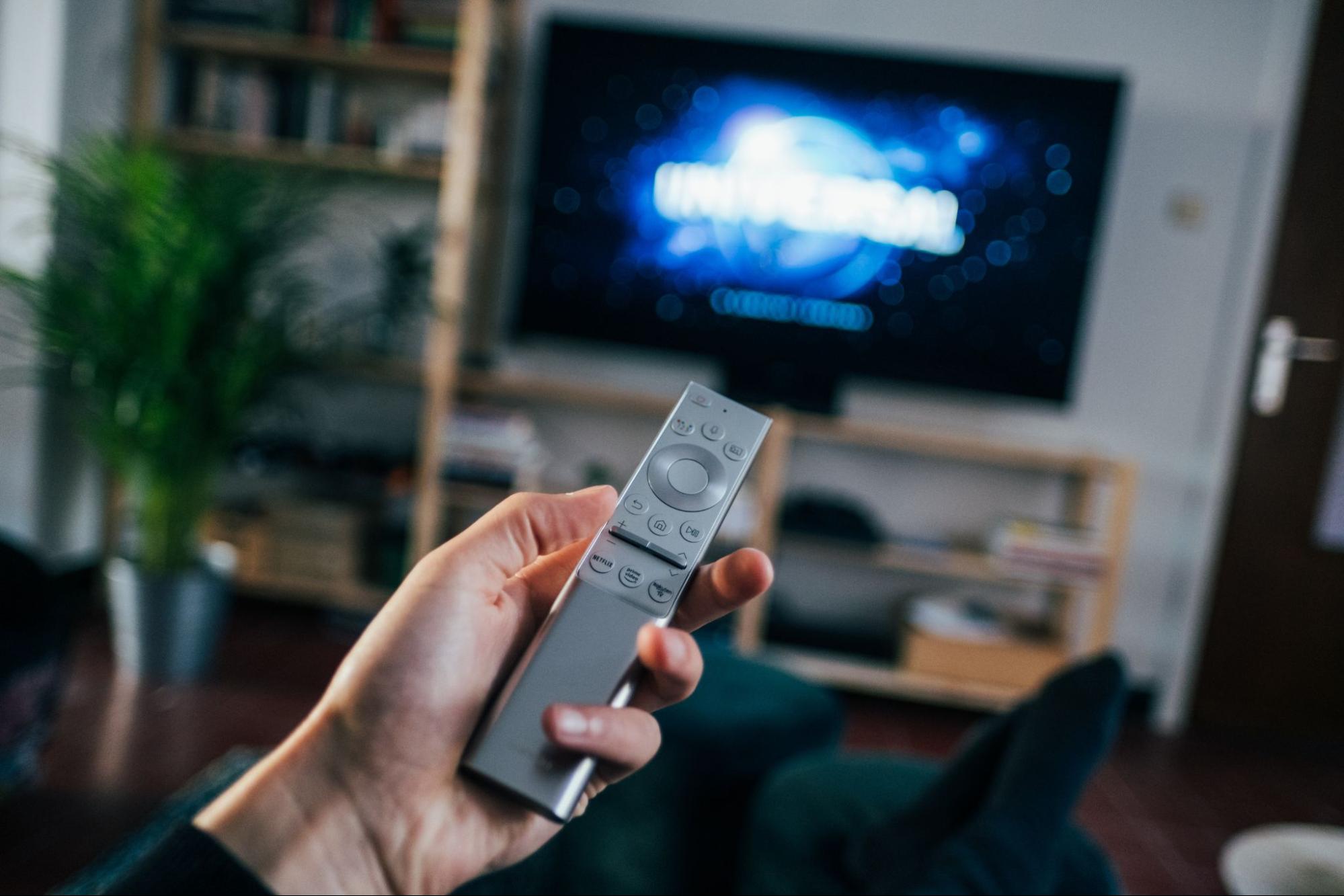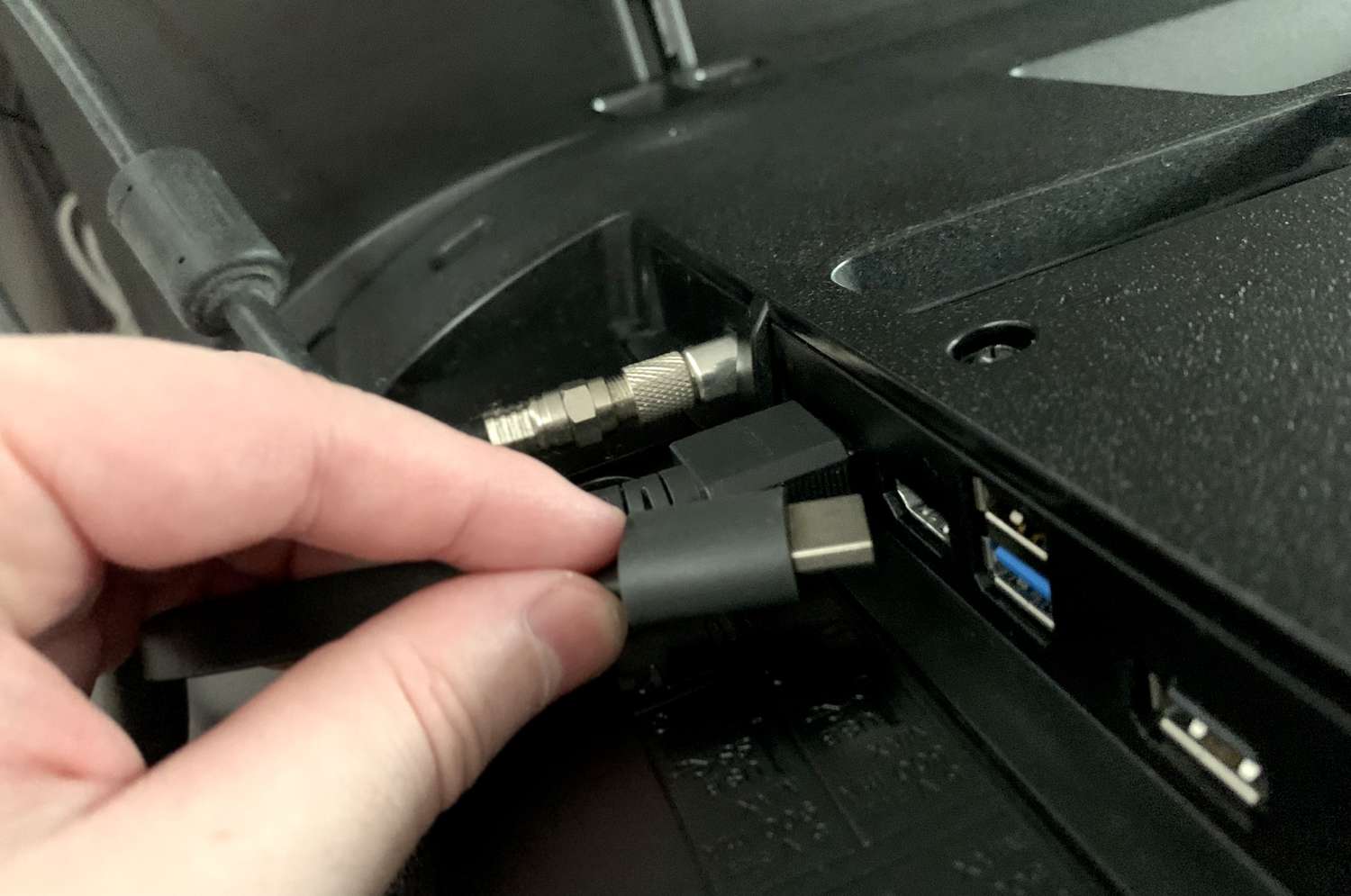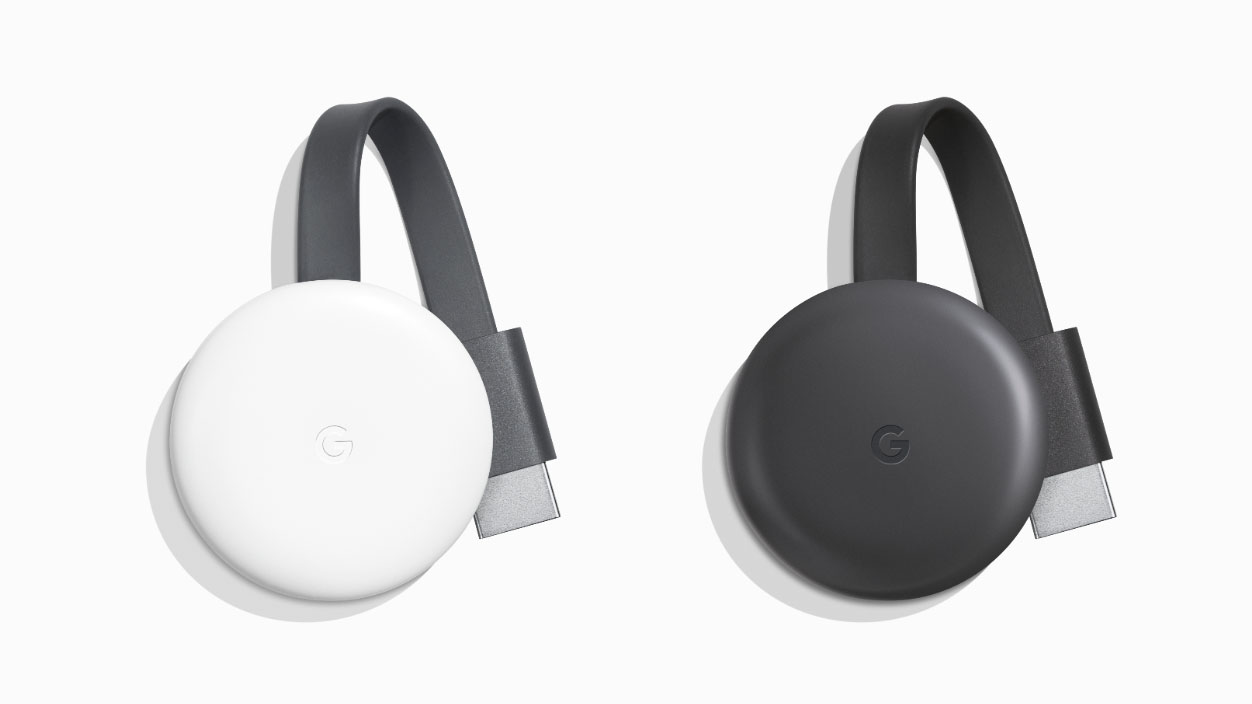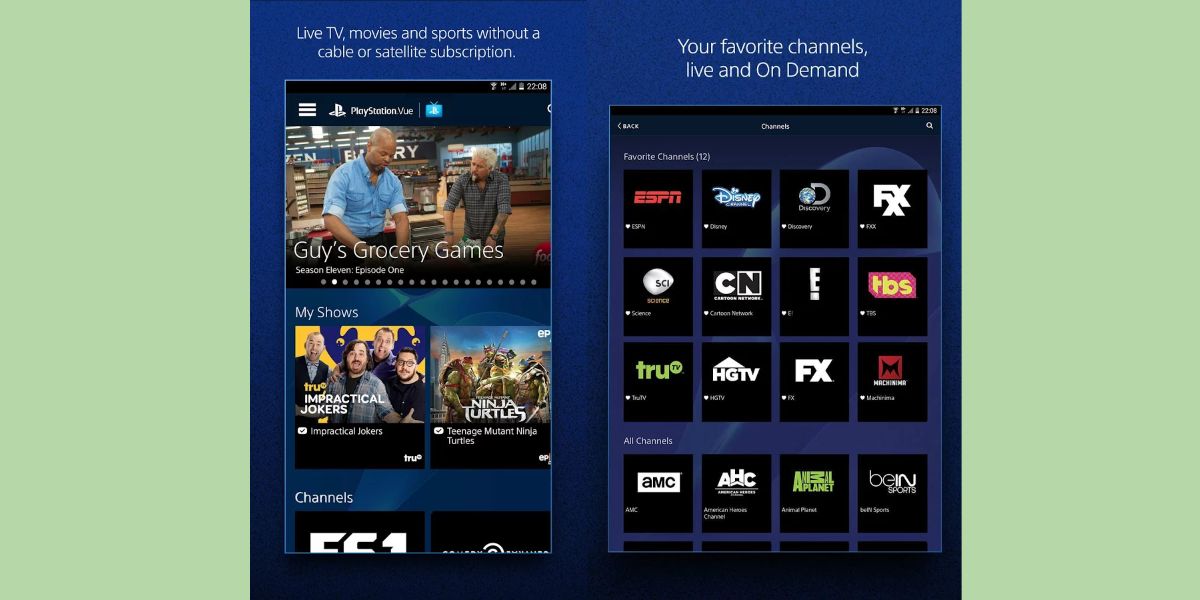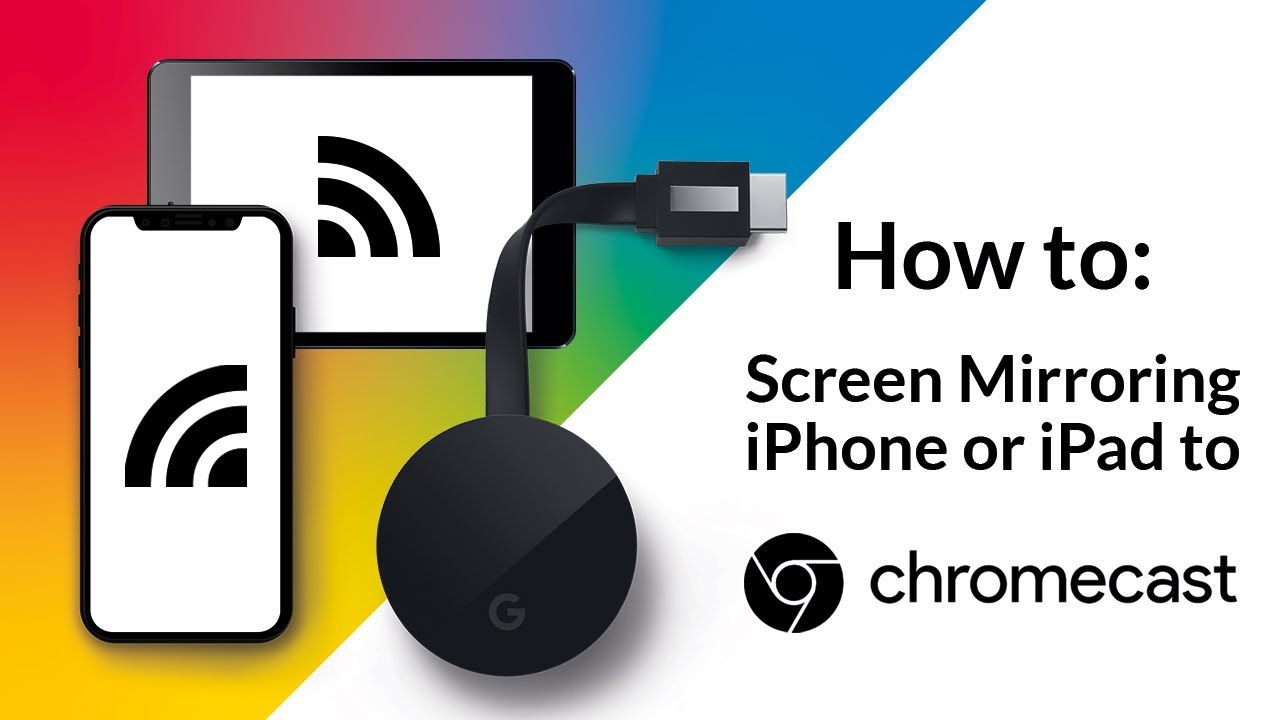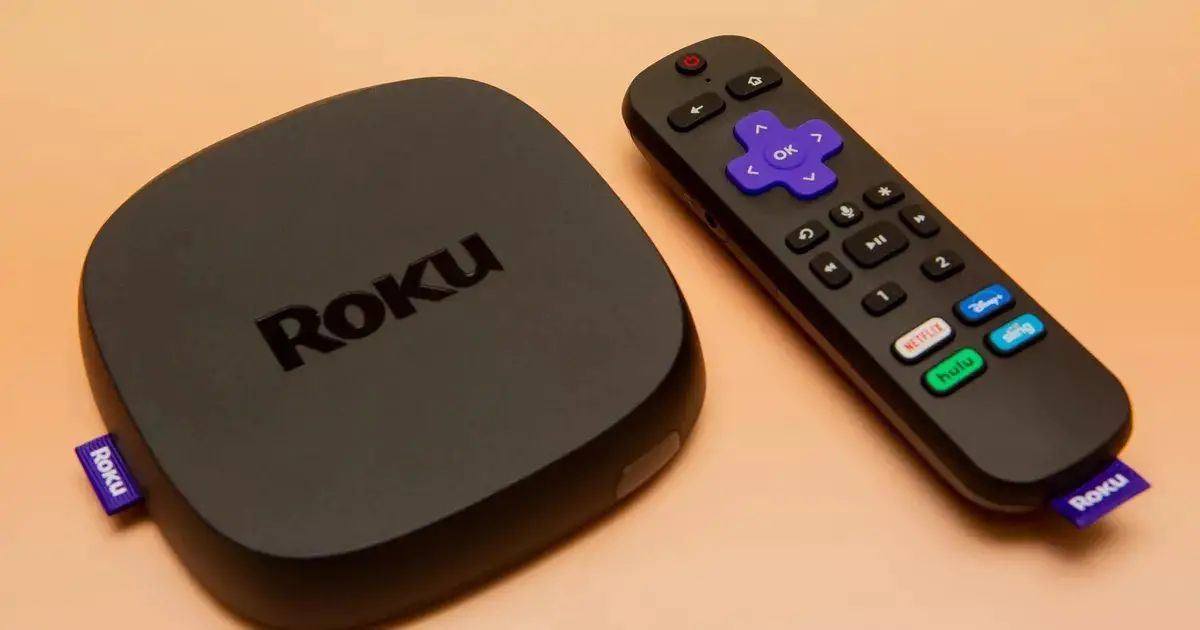Introduction
The Chromecast is a popular device that allows you to stream content from your computer or mobile device to your TV, making it a versatile tool for entertainment. Whether you want to watch your favorite movies, stream videos, or even present a slideshow, the Chromecast offers a seamless casting experience. In this article, we will explore how to Chromecast from your computer and enjoy your favorite content on the big screen.
Setting up the Chromecast is a breeze, and once connected to your TV, you can start casting in no time. There are several methods you can use to Chromecast from your computer, including using the Google Chrome browser, casting your desktop, and even utilizing the VLC media player. We’ll cover each of these methods in detail, providing step-by-step instructions to help you get started.
Method 1: Using the Google Chrome browser is perhaps the most straightforward way to Chromecast from your computer. With the Chrome browser installed, you can easily cast websites, online videos, and even local files to your TV with just a few clicks.
If you prefer to cast your entire desktop, Method 2 allows you to mirror your computer screen onto the TV. This feature is especially useful for presentations, demonstrations, or simply browsing the internet on a larger screen. We’ll guide you through the necessary steps to set up and cast your desktop effortlessly.
Alternatively, if you have video files that are not supported by the Chrome browser, Method 3 introduces using the VLC media player to Chromecast from your computer. VLC offers a wide range of file format support, making it a handy tool for casting your favorite movies and videos.
While Chromecast is generally user-friendly, troubleshooting may be required if you encounter any issues during the casting process. We will provide some common troubleshooting tips to help you resolve any connectivity or playback problems that may arise.
Now that you understand the various methods of Chromecasting from your computer and have some troubleshooting tricks up your sleeve, you’re ready to enjoy your favorite content on the big screen. So let’s dive into the details of each method and make the most out of your Chromecast.
Setting Up Chromecast
Before you can start Chromecasting from your computer, you’ll need to set up your Chromecast device. Follow these simple steps to get started:
1. Connect the Chromecast: Plug the Chromecast device into an available HDMI port on your TV. Make sure to connect the USB power cable to a power source. Once connected, switch the TV input to the corresponding HDMI port.
2. Download Google Home App: On your computer, smartphone, or tablet, download and install the Google Home app from the App Store or Google Play Store.
3. Set up Chromecast: Open the Google Home app and sign in with your Google account. Tap the “+” button to add a new device and select “Set up device.” Follow the on-screen instructions to complete the setup process.
4. Connect to Wi-Fi: During setup, the Google Home app will prompt you to connect your Chromecast to your Wi-Fi network. Choose your network and enter the network password if required.
5. Name your Chromecast: Give your Chromecast a unique name, making it easy to identify when casting from multiple devices.
Once your Chromecast is set up, you’re ready to start casting from your computer. Make sure that your computer and Chromecast are connected to the same Wi-Fi network for seamless casting.
Remember to keep your Chromecast device and Google Home app updated to access the latest features and improvements.
With your Chromecast seamlessly integrated into your home entertainment setup, let’s move on to the various methods you can use to Chromecast from your computer.
Casting from Computer
Now that your Chromecast is set up, let’s explore the different methods you can use to cast from your computer:
Method 1: Using Google Chrome Browser
One of the easiest ways to Chromecast from your computer is by using the Google Chrome browser. Follow these steps to cast content from websites, online videos, or even local files:
1. Open Google Chrome: Launch the Google Chrome browser on your computer.
2. Click on the Cast icon: Look for the Cast icon, which looks like a square with three curved lines in the bottom-right corner of the browser. Click on it.
3. Select your Chromecast device: From the list of available devices, choose your Chromecast device.
4. Start casting: Once connected, you can start casting the current tab, specific content on a webpage, or even the entire desktop. Simply click on the Cast icon again and select the desired option.
5. Adjust playback: You can control the playback, volume, and other settings directly from your computer or use your TV remote to make adjustments.
Method 2: Casting Desktop
If you want to cast your entire desktop to your TV, you can do so using the casting feature in the Google Chrome browser. This is useful for presentations, demonstrations, or simply browsing the internet on a larger screen. Follow these steps to cast your desktop:
1. Open Google Chrome: Launch the Google Chrome browser on your computer.
2. Click on the Cast icon: Look for the Cast icon in the bottom-right corner of the browser and click on it.
3. Select “Cast Desktop”: From the list of available devices, choose the option to “Cast Desktop.”
4. Confirm casting: A new window will appear showing your desktop. Click on the “Share” button to confirm casting your desktop.
5. Start casting: Your desktop will now appear on your TV. You can navigate, open applications, and showcase your screen on the big screen.
Method 3: Using VLC Media Player
If you have video files that are not supported by the Chrome browser, you can still Chromecast them using the VLC media player. Follow these steps:
1. Download and install VLC: If you don’t already have it, download and install the VLC media player from the official website.
2. Open VLC: Launch VLC media player on your computer.
3. Go to Playback menu: Click on the Playback menu at the top and select “Renderer.”
4. Select your Chromecast device: From the list of available renderers, choose your Chromecast device.
5. Play your video: Open the video file you want to cast and click on the Play button. The video will start playing on your TV via Chromecast.
Method 1: Using Google Chrome Browser
One of the most convenient and popular ways to Chromecast from your computer is by using the Google Chrome browser. This method allows you to cast websites, online videos, and even local files to your TV. Here’s how to do it:
1. Open Google Chrome: Launch the Google Chrome browser on your computer.
2. Click on the Cast icon: Look for the Cast icon in the bottom-right corner of the browser. It looks like a square with three curved lines. Click on it.
3. Select your Chromecast device: From the list of available devices, choose your Chromecast device. If you have multiple Chromecast devices, make sure to select the one you want to cast to.
4. Start casting: Once connected, you can start casting the current tab, specific content on a webpage, or even the entire desktop. To cast the current tab, click on the Cast icon again and select “Cast tab”. To cast specific content on a webpage, right-click on the content and choose “Cast”. To cast the entire desktop, click on the Cast icon and select “Cast desktop”.
5. Adjust playback: You can control the playback, volume, and other settings directly from your computer. The audio and video will be streamed to your TV, providing a seamless browsing and viewing experience.
One of the great advantages of using the Google Chrome browser for Chromecast is its compatibility with a wide range of websites and online video platforms. Whether you’re streaming from popular video streaming services like YouTube, Netflix, or Hulu, or browsing your favorite websites, you can easily cast the content to your TV with just a few clicks.
It’s worth noting that some websites and online video platforms have their own Cast buttons or options within their player. If you come across a website or video with such a feature, simply click on it to initiate the casting process directly.
Additionally, Google Chrome allows you to mirror the browser tab, which means anything you see on your computer screen will be replicated on your TV. This is useful for displaying presentations, slideshows, or even playing browser-based games on a larger screen.
Remember to keep your Chrome browser up to date to access the latest features and improvements related to Chromecast compatibility. You can check for updates by clicking on the three vertical dots in the top-right corner of the browser, selecting “Help”, and clicking on “About Google Chrome”.
Now that you’ve learned how to Chromecast from your computer using the Google Chrome browser, you’re ready to start enjoying your favorite websites and videos on the big screen. Let’s move on to the next method for casting from your computer.
Method 2: Casting Desktop
Casting your entire desktop to your TV can be a useful feature when you want to showcase presentations, demonstrate software, or simply browse the internet on a larger screen. With the Google Chrome browser, you can easily cast your desktop to your TV using the casting feature. Here’s how to do it:
1. Open Google Chrome: Launch the Google Chrome browser on your computer.
2. Click on the Cast icon: Look for the Cast icon in the bottom-right corner of the browser. It looks like a square with three curved lines. Click on it.
3. Select “Cast Desktop”: From the list of available devices, choose the option to “Cast Desktop”.
4. Confirm casting: A new window will appear showing your desktop. Ensure that the content you want to cast is visible on your computer screen.
5. Start casting: Click on the “Share” button in the bottom-right corner of the screen to confirm casting your desktop. Your entire desktop will now be mirrored on your TV.
With your desktop mirrored on your TV, you can navigate, open applications, and showcase content effectively. This method is particularly useful for presentations, as it allows you to display slideshows, documents, and software demonstrations to a larger audience.
During the casting process, both audio and video will be transmitted to your TV, providing an immersive viewing experience. You can control the audio volume from your computer or use your TV remote to adjust the settings.
While casting your desktop, keep in mind that any notifications, pop-ups, or other private information displayed on your computer screen will also appear on the TV. Make sure to prepare your desktop accordingly and close any unnecessary applications or personal content before casting.
It’s worth noting that the performance and smoothness of desktop casting may vary based on your computer’s capabilities and the strength of your Wi-Fi network. For the best experience, ensure that your computer and Chromecast are connected to the same Wi-Fi network and try to minimize network congestion.
To stop casting your desktop, simply click on the Cast icon in your browser and select “Stop casting” or click on the “Stop” button in the casting notification that appears on your computer.
Now that you know how to cast your entire desktop to your TV using the Google Chrome browser, you can make the most out of this feature for presentations, demonstrations, or simply browsing the web on a larger screen. Let’s move on to the next method for Chromecasting from your computer.
Method 3: Using VLC Media Player
If you have video files that are not supported by the Google Chrome browser, or if you prefer using a standalone media player, you can still Chromecast them from your computer using the VLC media player. VLC offers extensive file format support and allows you to cast your favorite movies and videos to your TV effortlessly. Here’s how to do it:
1. Download and install VLC: If you don’t already have VLC media player installed on your computer, visit the official VLC website and download the latest version. Follow the on-screen instructions to install it.
2. Open VLC: Launch VLC media player on your computer.
3. Go to the Playback menu: In the top menu bar of the VLC window, click on “Playback”.
4. Select “Renderer”: From the dropdown menu that appears, hover over “Renderer” and select your Chromecast device from the list.
5. Play your video: Open the video file you want to cast in VLC. Click on “Media” in the top menu bar, then select “Open File” or “Open Folder” to navigate to your video file. Once the video is loaded, it will start playing on your computer.
6. Start casting: To begin casting the video to your TV, click on “Playback” in the menu bar, hover over “Renderer”, and select your Chromecast device. The video will now stream to your TV via Chromecast.
VLC allows you to control the playback, volume, and other settings directly from the media player. You can use VLC’s playback controls to pause, play, rewind, fast forward, and adjust the volume of the video that is being casted to your TV.
One of the advantages of using VLC is its ability to handle a wide range of video formats, including popular ones like MP4, AVI, MKV, and more. This gives you the freedom to cast videos that may not be compatible with the Chrome browser or other casting methods.
Keep in mind that the performance of video casting using VLC may depend on the specifications of your computer and the size of the video file. It’s recommended to use a stable Wi-Fi network to ensure smooth playback and minimize interruptions.
To stop casting the video, simply click on the “Stop” button in VLC’s playback controls or close the VLC media player window.
Now that you know how to use VLC media player to Chromecast videos from your computer, you can enjoy your favorite movies and videos on the big screen with ease. Let’s move on to some troubleshooting tips and additional tips to enhance your Chromecasting experience.
Troubleshooting and Tips
While Chromecasting from your computer is generally a smooth and seamless experience, you may encounter some issues or want to optimize your casting setup. Here are some troubleshooting tips and additional tips to enhance your Chromecasting experience:
1. Check your Wi-Fi connection: Ensure that your computer and Chromecast are connected to the same Wi-Fi network. A stable and reliable Wi-Fi connection is essential for smooth casting. If you’re experiencing connectivity issues, try restarting your router or reconnecting to the Wi-Fi network.
2. Restart your devices: If you’re facing any casting issues, try restarting both your computer and Chromecast. Sometimes, a simple reboot can solve temporary glitches and restore smooth casting functionality.
3. Update your Chromecast and apps: Keeping your Chromecast device and casting apps up to date is important to access the latest features, performance enhancements, and bug fixes. Check for firmware updates for your Chromecast device through the Google Home app and update your casting apps from their respective app stores.
4. Disable VPN or Proxy: If you’re using a VPN or proxy connection on your computer, it may interfere with your casting experience. Try disabling these services and connect directly to your Wi-Fi network.
5. Clear cache and cookies: If you’re experiencing issues with specific websites or online videos, try clearing your browser’s cache and cookies. This can help resolve playback or loading problems.
6. Optimize your Wi-Fi network: If you’re facing frequent buffering or stuttering issues during casting, try optimizing your Wi-Fi network. Position your router closer to your Chromecast device, remove any obstructions, or consider upgrading your router to a newer and more powerful model.
7. Use an Ethernet adapter: If you have a weak Wi-Fi signal or prefer a more stable connection, consider using an Ethernet adapter with your Chromecast. This allows you to connect your Chromecast directly to your router using an Ethernet cable for a wired connection.
8. Use quality video sources: When casting videos, make sure you’re using high-quality video sources. Low-quality or poorly encoded videos may result in lower image and audio quality, impacting your overall casting experience.
9. Disconnect unnecessary devices: If you’re experiencing poor Wi-Fi performance, disconnect any other unnecessary devices from your network to reduce network congestion and allocate more bandwidth to your Chromecast.
10. Experiment with video settings: Some TVs have different picture settings, such as motion smoothing or HDR enhancements. While casting, you can experiment with the video settings on your TV to find the optimal viewing experience for your content.
By following these troubleshooting tips and implementing the additional tips mentioned, you can overcome common issues and optimize your Chromecasting experience. Now you’re equipped with the knowledge and tools to make the most out of Chromecasting from your computer. In the next section, we’ll wrap up everything we’ve covered so far.
Conclusion
Chromecasting from your computer opens up a world of possibilities, allowing you to enjoy your favorite content on the big screen with ease. Whether you prefer streaming videos, browsing websites, or showcasing presentations, the Chromecast offers a seamless casting experience.
In this article, we explored three different methods to Chromecast from your computer. Using the Google Chrome browser, you can easily cast websites, online videos, and even local files. Casting your entire desktop provides a convenient way to present slideshows, demonstrate software, or browse the internet on a larger screen. And if you have video files that are not compatible with the Chrome browser, the VLC media player allows you to Chromecast them effortlessly.
Throughout the article, we provided troubleshooting tips to help you resolve any issues you may encounter during the casting process. From checking your Wi-Fi connection to keeping your devices and apps up to date, these tips will ensure a smooth casting experience.
To optimize your Chromecasting experience, we also shared additional tips such as using an Ethernet adapter, optimizing your Wi-Fi network, and experimenting with video settings on your TV.
Remember that the performance of Chromecasting may vary based on the specifications of your computer, the strength of your Wi-Fi network, and the quality of the content you’re casting. It’s essential to ensure a stable connection and use high-quality video sources for the best possible experience.
Now that you have a comprehensive understanding of how to Chromecast from your computer, you can enjoy a wide range of content, from movies and videos to presentations and web browsing, on your TV. So go ahead, grab your popcorn, and immerse yourself in a world of entertainment with Chromecast and your computer!







